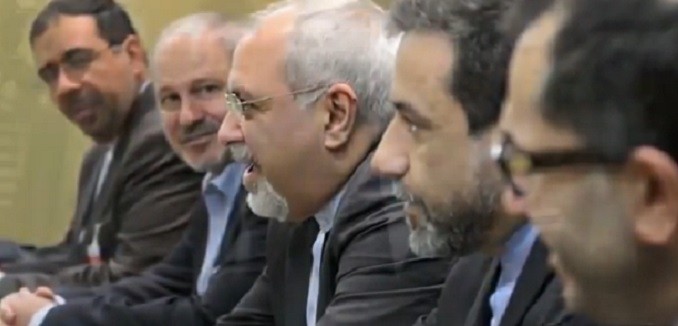Iranian Deputy Foreign Minister Abbas Araqchi over the weekend catalogued the topics that Iran expects to negotiate over when comprehensive nuclear negotiations renew, pointedly excluding any mention of Iran’s ballistic missile program while including uranium enrichment and plutonium production.
Araqchi who had attended a Commission session on Sunday said Iran declared during recent nuclear talks in Vienna it will not accept any issues beyond its (November) deal and that no issues other than Iran’s nuclear program should ever be raised during the talks, according to Naqavi Hosseini. Araqchi further said that no (UN Security Council) anti-Iran resolutions could be implemented.
Araqchi, a senior member of Iran’s negotiating team with the five permanent members of the UN Security Council plus Germany over its nuclear program, told Iranian legislators that the recent round of talks in Vienna aimed to find a comprehensive deal to include Iran’s right to go ahead with its peaceful nuclear activities, lifting of all anti-Iran sanctions and normalizing the nuclear issue.
The position has become a familiar one, with Iranian officials repeatedly emphasizing in recent weeks that issues related to ballistic missiles would be off-limits to negotiators. White House officials, in contrast, have explicitly assured U.S. lawmakers that Iran will be expected to address its ballistic missile program, after those lawmakers expressed concerns that American negotiators had been outmaneuvered in setting the terms for the interim Joint Plan of Action (JPA).
“Per the Joint Plan of Action, Iran must address the [United Nations] Security Council resolutions related to its nuclear program before a comprehensive resolution can be reached,” Bernadette Meehan, National Security Council spokesperson, told the Washington Free Beacon.
“Among other things, UN Security Council Resolution 1929 prohibits all activities involving ballistic missiles capable of delivering nuclear weapons, including launches,” Meehan said. “So this issue will need to be addressed during the comprehensive discussions.”
The agreement increasingly appears to have provided sweeping economic improvements to Tehran – far beyond what the administration publicly predicted – even as Iran was allowed to continue enriching unlimited amounts of uranium to 5% purity, continue bolstering its plutonium producing Arak complex, and continue developing advanced centrifuges and ballistic missiles. Limits on ballistic missiles were entirely absent from the JPA, an omission that the Iranians subsequently tried to leverage to limit the scope of final negotiations. Previous documents outlining Iran’s nuclear program, for which the Islamic republic is expected to present a full accounting and to limit, are on the side of the administration. The International Atomic Energy Agency (IAEA) in 2008 explicitly called attention [PDF] to Farsi-language documents detailing “various aspects of an unidentified entity’s effort to develop and construct a Shahab-3 re-entry vehicle capable of housing a new payload for the Shahab-3 missile system.” In 2011 the IAEA went further [PDF], describing documents on various Iranian programs that established “a link between nuclear material and a new payload development programme.”




